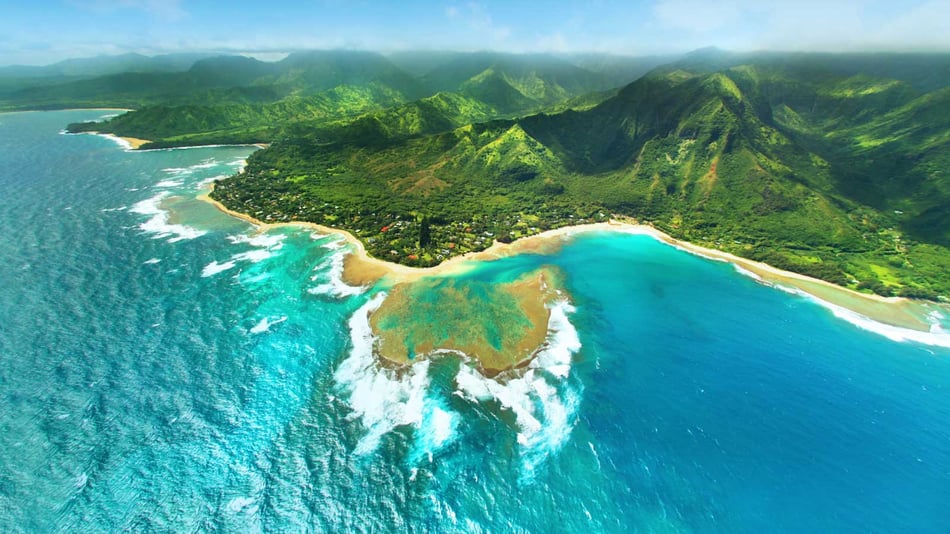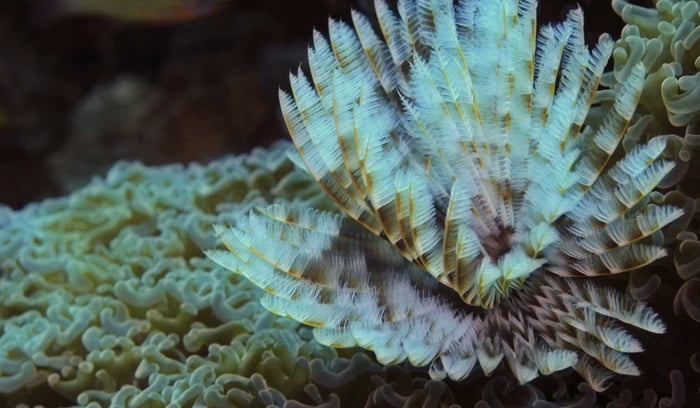Ocean Infernos: Exploring the Phenomenon of Underwater Volcanoes

Tin
4
min. read

Did you know that there are more volcanoes under the sea than on land? Recent discoveries have revealed that the seafloor is teeming with underwater volcanoes that play a vital role in shaping our planet.
The eruptions of underwater volcanoes are truly a spectacle to behold. In 2018, researchers were amazed to witness an underwater volcano near Tonga erupting continuously for two weeks and the force was larger than that of a nuclear blast. This rare event allowed scientists to gain valuable insights into the complex processes that occur beneath the ocean's surface.
The significance of underwater volcanoes goes beyond their geological role. These marvels of nature contribute to the planet's biodiversity, support ecosystems, and even influence our climate. As we continue to explore the depths of our oceans, we are constantly uncovering new and exciting information about these fiery giants beneath the waves.

What are Underwater Volcanoes?
Underwater volcanoes, also known as submarine volcanoes, are natural structures formed when molten rock (magma) is forced upward to the seafloor, producing eruptions of lava and other volcanic products. These eruptions occur beneath the ocean’s surface and can sometimes reach astounding depths, with some volcanoes located as deep as 3,300 meters (10,000 feet) underwater.

The interaction between lava and seawater creates distinct phenomena, which are much different than the interactions that occur in the atmosphere. Rapid cooling caused by seawater can lead to the formation of unique rock structures and pillow-shaped lava formations, a sight rarely, if ever, seen in land-based eruptions.
Furthermore, the locations of underwater volcanoes offer a fascinating insight into the geological dynamics of our planet. The majority are found along mid-ocean ridges – immense mountain chains that snake through our world's oceans; the Mid-Atlantic Ridge is a prime example. These ridges are essentially the seams of Earth's tectonic plates, where new oceanic crust forms as plates pull apart and magma rises to fill the gap.
Another intriguing aspect of submarine volcanoes involves "hotspots." Hotspots are isolated areas where plumes of hot magma rise straight up from the deep mantle to the crust. The Hawaiian Islands, a chain of both underwater and terrestrial volcanoes, owe their existence to such a hotspot.
The Ecology of an Underwater Volcano
Hydrothermal vents are essentially underwater geysers, formed at sites where seawater seeps into the ocean floor, gets heated by magma beneath the Earth's crust, and then shoots back up as a mineral-rich, superheated jet. The water spewed from these vents can reach temperatures of up to 400 degrees Celsius (752 F).
Despite the intense heat, pressure, and lack of sunlight, these vents are teeming with life. They host unique ecosystems that have evolved to harness the chemicals in the vent fluids for energy through a process called chemosynthesis. Unlike photosynthesis, which uses sunlight to convert carbon dioxide into energy, chemosynthesis relies on chemical reactions to produce energy.

The organisms that thrive in this otherworldly environment are known as extremophiles, due to their ability to survive under extreme conditions. These organisms, which include bacteria, tubeworms, and deep-sea clams, have developed fascinating adaptations. For example, some extremophiles have enzymes that function specifically at high temperatures, while others have specialized proteins that protect their DNA from damage due to high pressure.
Importance and Impacts of Underwater Volcanoes
Underwater volcanoes play a vital role in shaping both our planet's physical landscape and its larger climatic systems. One of the most significant contributions of these subaquatic giants is their role in Earth's temperature regulation. As they erupt, they release vast amounts of heat into the oceans. This heat distribution helps regulate temperatures, ensuring our oceans don’t get too cold, particularly in the abyssal depths.
Beyond temperature, underwater volcanoes are pivotal in influencing ocean chemistry. Their eruptions release a cocktail of minerals and gasses, such as carbon dioxide, which can affect the acidity and nutrient balance of the surrounding waters. This, in turn, can impact marine life and oceanic food chains.
From a geophysical perspective, underwater volcanoes are critical for the processes of seafloor spreading and plate tectonics. These volcanoes spew out molten magma that solidifies and forms new oceanic crust. As this happens, the seafloor gradually expands, pushing tectonic plates apart and reshaping the face of our planet. This dynamic process is fundamental to the Earth's geological life cycle and has been instrumental in crafting the continents as we know them today.

As scientists continue to explore and study the ecology around underwater volcanoes, they are uncovering incredible biodiversity and gaining a deeper understanding of life's adaptability and tenacity to survive even in the harshest environments. These submerged powerhouses are more than just features of the ocean floor: they're active agents in the continuous story of Earth's evolution and balance.
At IMARCS, we're driven by a resilient mission to channel the sea's unparalleled capabilities to positively affect life both below the waves and on land. We are committed to pioneering innovative mariculture solutions that rehabilitate marine ecosystems and fortify our communities. Like a volcano forging new ecosystems in the abyss, IMARCS envisions a future where marine science and mariculture create a profound, lasting impact on our world, showing that we have the power to shape a prosperous, sustainable present and future.
References:
Forces of Nature. (n.d.). Forces of Nature. https://www.nationalgeographic.org/forces-nature/volcanoes.html
Patel, K. (2023, April 14). The power of a volcanic eruption: This one was bigger than any U.S. nuclear blast. Washington Post. https://www.washingtonpost.com/climate-environment/2023/04/14/tonga-volcano-explosion-destruction-study/
Underwater Volcanoes - Woods Hole Oceanographic Institution. (2020, January 16). Woods Hole Oceanographic Institution. https://www.whoi.edu/know-your-ocean/ocean-topics/how-the-ocean-works/seafloor-below/volcanoes/
Newland, E.L., Mingotti, N. & Woods, A.W. Dynamics of deep-submarine volcanic eruptions. Sci Rep 12, 3276 (2022).
Cas, R. A. F., & Simmons, J. M. (2018, November 20). Why Deep-Water Eruptions Are So Different From Subaerial Eruptions. Frontiers in Earth Science, 6.
Do volcanoes occur in the ocean? (n.d.). Do Volcanoes Occur in the Ocean? https://oceanservice.noaa.gov/facts/volcanoes.html